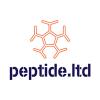https://en.wikipedia.org/wiki/Apigenin Apigenin induces autophagy. It is a benzo-site ligand at the GABA-A receptor, being a PAM. It also binds to the adenosine receptor, as well as being an NMDA antagonist. It is also neurogenic. The only negative I can think of is that it is anti-inflammatory, which might not be good for sleep.
I would strongly suggest not taking PDE4i at night time, from my understanding that would destroy circadian signaling and rhythm. Curcumin, though a wonderful substance, would not be good for sleep either.
Spermidine seems good at night.
Maybe take PDE4i and curcumin in morning and spermidine and apigenin at night? Of course we could add more as well.
EDIT: Apigenin also actiavtes monoamine transporters so it can blunt drive and salience, good for sleep.
Which mechanisms are you thinking of with PDE4i and circadian biology? Ibudilast (mainly PDE4i) is a bit non-selective and PDE5i is pretty bad before bed so it may not be the best idea...but I'm curious. Took it last night (10mg) without any problems or noticeable positive effects. I'll try it again a few times and see what happens.
Curcumin/turmeric seems to enhance some people and inhibit others before sleep (anecdotally). What are your reasons for advising against it? Glial cell activity?
Anecdotally it works pretty well for me. Wake up refreshed with a clear head.
Spermidine is quite good before bed ime. Been taking it for about a month and half so we'll see how it works over time.
I've only taken apigenin during the day. I'll look into the mechanisms (there are always many) and see how it looks overall. Have you tried it before bed?
cAMP is released at waking and resets your circadian rhythm. I could be wrong though, maybe PDE4i only works on a small subset of cAMP and allows you to escape the circadian rhythm resetting.
Curcumin is probably good for people who have high inflammation but for people who have low inflammation I just see it as stopping you from getting to sleep. What theory do you have about glial cells?
Hey if it works for you that's all that's important.
Apigenin has a long ass half-life, like 93 hours. I have eaten shitloads of parsely and have enjoyed chamomile quite a bit, both of which have lots of apigenin. It's good. Apparently supplementing it has low absorption but in it's natural form it's bioavailable.
Does autophagy hurt performance? I imagine it does but if not then we should do it all day and night... maybe
























































